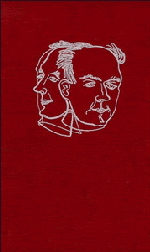Book contents
1 - Buildings Chords from Different Intervals
from PART III - CHORD-FORMATION
Published online by Cambridge University Press: 05 June 2015
Summary
In the conventional study of harmony the process of explaining the method of building up chords is to point out that they are formed, in their original positions, by the addition of intervals of a third, one on top of another. Thus, a “common chord” or major triad is found to contain a major third underneath, on which has been superimposed a minor third. A minor chord is formed in reverse manner, by adding a major third on top of a minor third. A diminished triad is formed by the use of two minor thirds together, while an augmented triad is built from two major thirds. When additional material is desired, another major or minor third is added to either of the four triads, making what is called a seventh chord, as the outside interval so formed will always be a seventh. Certain seventh chords have been preferred for frequent use, such as the “dominant” seventh chord, formed by two minor thirds above a major one. The reason for this is doubtless that such a chord is actually formed by the overtone series (fourth to seventh partials, inclusive). The use of all other forms of seventh chords, however, as well as ninth chords, which are formed by adding still another third to a seventh chord, is general in contemporary music. No particular reason for building chords in thirds rather than other intervals is customarily given; but the reason becomes evident in the light of the interpretation of the history of chord usage, given in the first chapter. In early times the first few overtone intervals, fifths, fourths, and octaves, were regarded as the foundation of intervals, and the musical theory of those times permitted only fifths and octaves as points of rest, while thirds and sixths, or any other intervals, were resolved to the “perfect” intervals.
- Type
- Chapter
- Information
- New Musical Resources , pp. 111 - 116Publisher: Cambridge University PressPrint publication year: 1996

